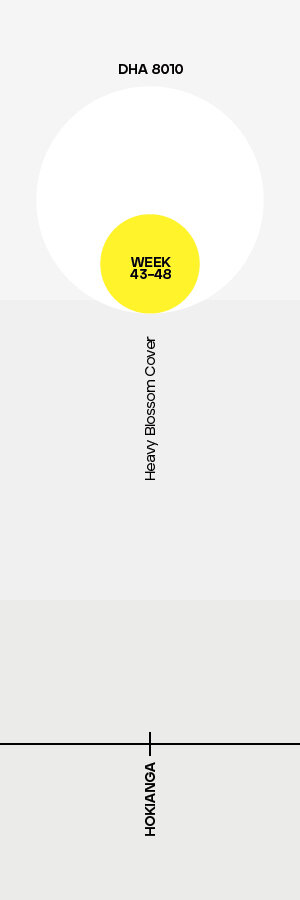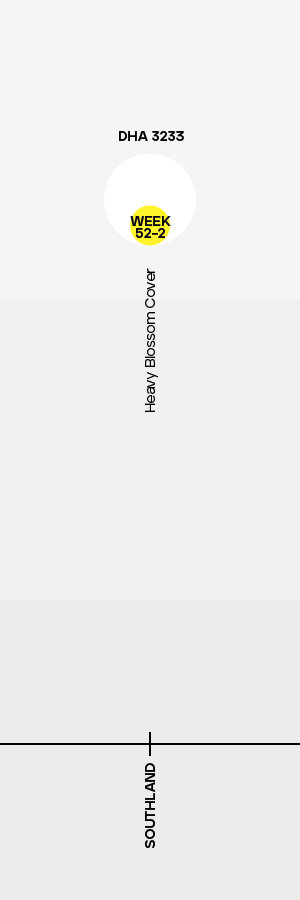Plant on Purpose.
At Kauri Park we’re always thinking about how to create, and enhance, ecosystems. We believe in planting ‘on purpose’. This means knowing the exact species of plant to choose, for the exact job it’s best placed to do, in the exact ecosystem it inhabits.
When it comes to planting mānuka we obsess over how we can deliver the greatest ‘return on species’ UMF yield from each plant. So before we get our hands dirty we understand the genetics of the mānuka seed we’re using, the ecology of the flora and the dynamics of the entire ecosystem that we’re planting for so we nurture the right mānuka for each job.
Genetics and site selection.
As an industry we know that higher MGO levels in mānuka honey are mostly derived from high dihydroxyacetone (DHA) levels in the nectar of the flower. At Kauri Park we’ve designed a plant genetics breeding program aimed at identifying the mānuka cultivars which exhibit high UMF and increased productivity.
Our decades of dirty-fingernailed experience and extensive genetics testing have helped us to know which provenances (from a wide range of regionalities) produce higher average DHA levels in mānuka nectar. We have tested nectar DHA from a huge number of species from across the length and breadth of New Zealand - north and south, coastal to semi-alpine. We have been able to create our own classification system for the genetics of superior plants, which we are propagating through cuttings and seed cultivation.
After genetics, the other key driver in creating superior UMF quality is the size and typology of the site’s ecosystem. Naturally mānuka is not a preferred nectar species for honey bees. They prefer clover and other native species like rewarewa and kamahi. However, these species reduce the UMF of the honey produced. Therefore, the larger the area planted in mānuka the less likely the bees are going to collect nectar from other sources. So we always recommend positioning the bee apiaries in the centre of a mānuka forest. An ideal forest size would be 50ha+.
For a new plantation of mānuka, Kauri Park would generally recommend planting the local provenance together with plants grown from other provenances to spread the flowering duration over a longer period. Consideration is also taken for the ability of a provenance to withstand hard frosts and winter snow. Pollen rich species such as Chamaecytsus palmensis (tree lucerne) and Psuedopanax arboreus (five finger) should be planted around the apiary site to provide pollen for bee brood.
Return on species.





















Manuka - planting, farming or growing?
Talk to our Manuka specialist Andrew Wearmouth.
Andrew Wearmouth +64 21 220 9031





